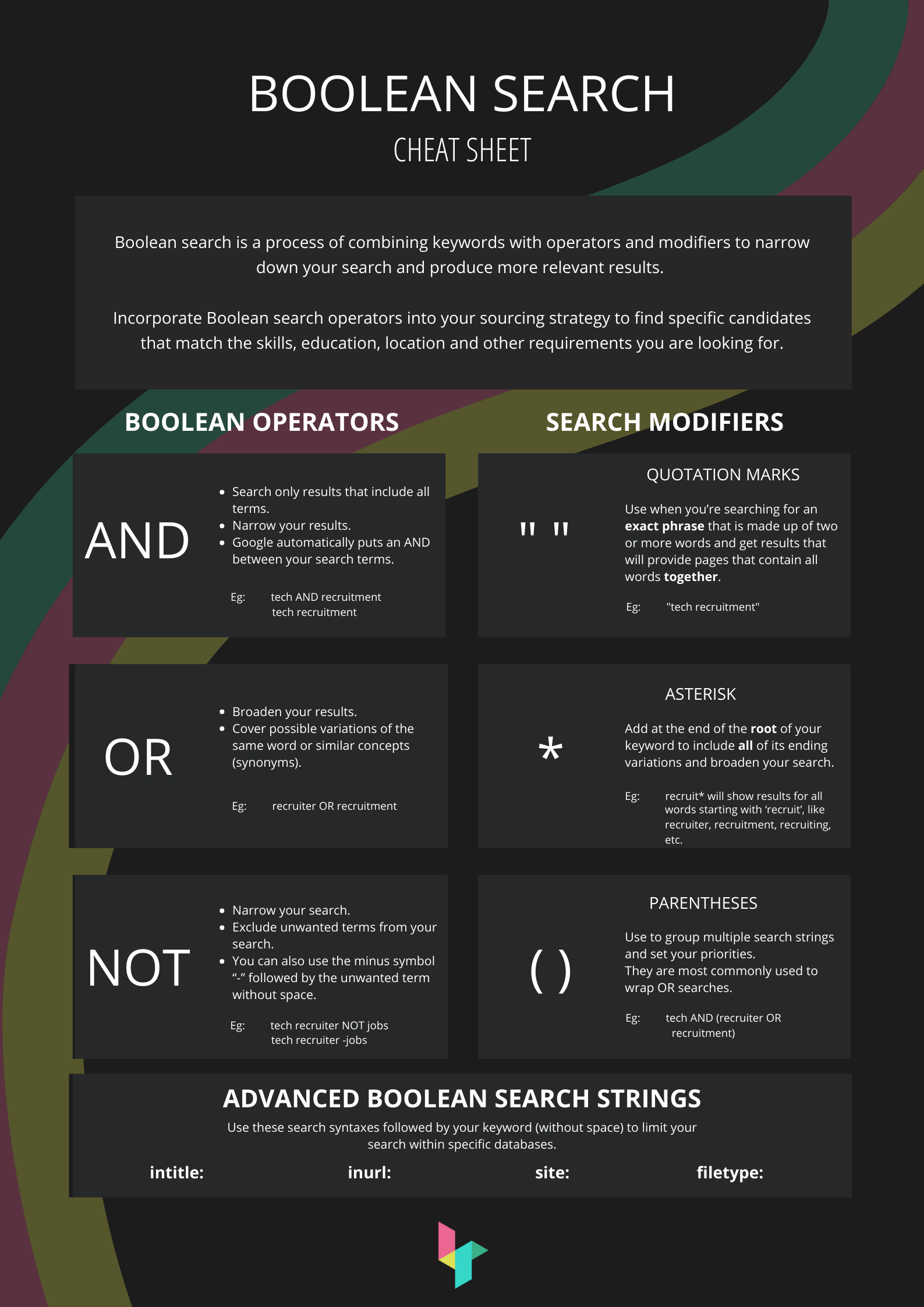


When you use Boolean searching, you may find passive candidates who best match your criteria. Opportunity: Not all candidates online are actively searching for jobs. By using Boolean search strings, you can reduce the time you spend filtering through results. This can search for candidates and resumes more efficiently.Īccuracy: When you use the specific terms for Boolean searching, you can find exactly the information you want. These are some reasons why Boolean searching is important for recruiters:Įfficiency: As a recruiter, learning to use Boolean searching can help you find a large number of results quickly. Related: Guide to the Recruitment Process Why is Boolean searching important for recruiting Tailoring search results to specific criteria and filtering out irrelevant results can make the search process faster and more precise. They can benefit people who find candidates for open positions, including recruiters, human resources representatives and managers, because formulating a search string with Boolean operators can make it easy to source resumes for specific job candidates. The name "Boolean" comes from a mathematician named George Boole, who developed the mathematical theory that all variables have a value of "true" or "false." A Boolean search uses Boolean operators-such as AND, OR and NOT-to narrow or broaden a search depending on the searcher's intentions.īoolean search strings are combinations of Boolean operators and search keywords. Mathematical operators are symbols that calculate values, such as addition and subtraction signs. What is Boolean searching?īoolean searching is a search process that uses mathematical operators to find the most relevant search results. In this article, we explain what Boolean search strings are and why they're important, review the best search terms to use, provide the steps you can follow to use them and explore Boolean search term examples. If you're a recruiter, learning more about Boolean search strings can help you make your search process more efficient. Recruiters can use it to find resumes and candidates that most closely match the required qualifications. If you don't put in the parentheses, the search statement is processed strictly from left to right, so that the AND is done first. This search strategy will retrieve records containing both of the concepts, Diet Therapy + Bulimia, or any records with the concept Anorexia.A Boolean search string is a search tool that allows you to limit or require specific results. For example, diet therapy AND ( bulimia OR anorexia ) will retrieve records containing the two concepts, Bulimia + Diet Therapy, or the two concepts, Anorexia + Diet Therapy, or records that contain all three concepts, Bulimia + Diet Therapy + Anorexia. Searches within parentheses are performed first and operations proceed from left to right. The order in which the operations (AND, OR, NOT) are processed can vary between systems. Use parentheses ( ) to separate keywords when you are using more than one operator and three or more keywords. Nesting, or mixing the Boolean operators, is a way to combine several search statements into one comprehensive search statement.

For example, you could search multi-infarct dementia by using Dementia NOT Alzheimer's.īut be careful using this because you would eliminate records discussing both types of dementia, as all articles discussing Alzheimer's are eliminated. The final Boolean operator NOT allows you to exclude concepts not relevant to your search. The more concepts or keywords you OR together, the more records you will retrieve. For example, kidney disease OR renal diseases will retrieve citations using either (or both) terms. This expands your search by retrieving citations in which either or both terms appear. The Boolean operator OR allows you to broaden a concept and include synonyms. The more concepts you AND together, the fewer records you will retrieve. For example: "Does taking aspirin cause Reye's Syndrome in children?" This will retrieve citations that discuss all three concepts in each article. When terms/concepts are combined with the AND operator, retrieved records must contain all the terms.

(The shading represents the outcome of the Boolean operation.) The circle diagrams that help illustrate the relationships between the sets used in Boolean logic were named after another mathematician, John Venn.


 0 kommentar(er)
0 kommentar(er)
